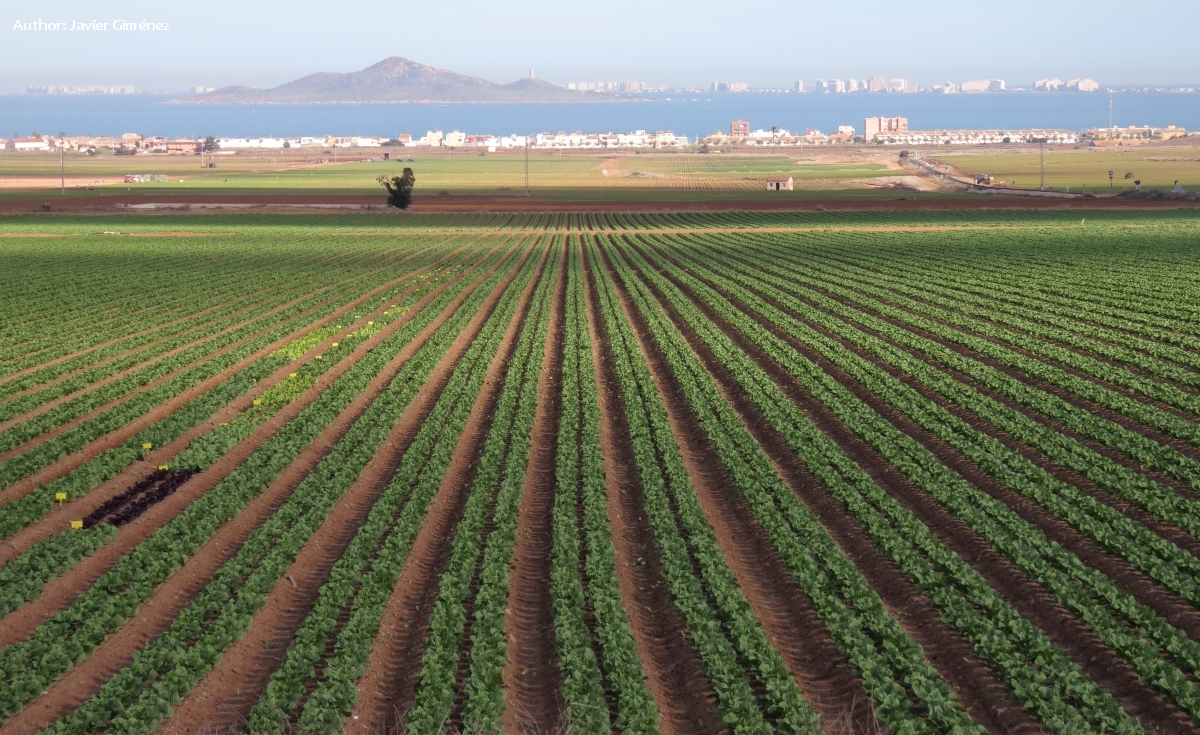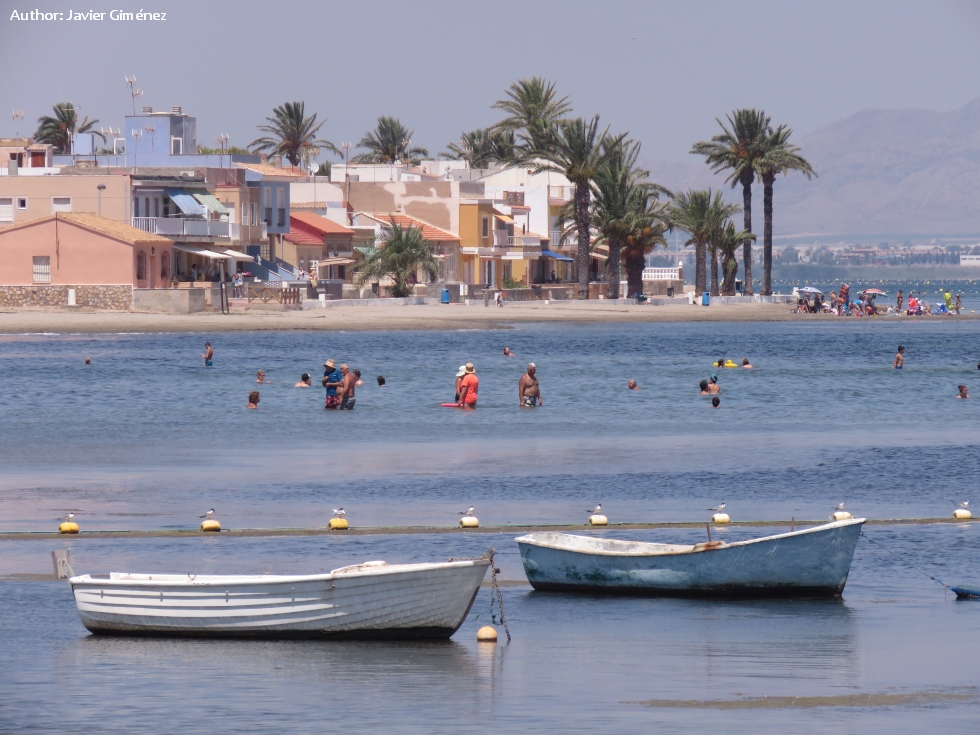Location and characteristics
The Mar Menor coastal lagoon (135 km2) is located in the Region of Murcia (SE Spain).
The area is characterized by multiple environmental, social-cultural and economic interests, often competing for scarce resources, water being the most important. There is a high potential for complementarity, win-win scenarios and development of sustainable business cases based on public-private collaboration, efficient use of water, and innovative farming practices and a transition to sustainable models of tourism and agriculture.

The catchment draining into the Mar Menor covers an area of 1.255 km2 and is mainly covered by intensive irrigated agriculture and tree crops. The intensive and highly profitable irrigated agriculture depends on scarce low quality groundwater and water from inland inter-basin water transfers. Agriculture provides labor and income to the region, but forms a source of excessive nutrients and contamination into the Mar Menor coastal lagoon. The resulting poor water quality affects the ecology of the lagoon with severe implications for its potential function for tourism and fisheries.
The coastal lagoon forms part of a Specially Protected Area of Mediterranean Importance (SPAMI).
The Mar Menor is one of the hotspots for tourism in the Region of Murcia, with a total number of 346,000 tourists and 1.4 million over-night stays in 2016. Beside international visitors, the Mar Menor has an important touristic function for the regional population (1.5 million inhabitants).

The availability of water for irrigation and drinking water for tourism will be further reduced under future climate conditions.
As such, the Mar Menor is strongly influenced by interactions between inland agriculture on the one side, and coastal tourism and fisheries affecting natural ecological values and socioeconomic sustainability on the other side.
The need to move towards sustainable models of agriculture, fishery and tourism is increasingly recognized and recently revived strongly due to sudden increase in contamination levels resulting in a strong drop in tourism.
How can we promote the sustainable economic, environmental and social development of the coastal areas of the Mar Menor and the hinterland rural areas?
Ambition
- Develop management models based on the effective use of natural resources through the transition to sustainable tourism and agriculture models that allow a good ecological status of the lagoon.
- Identify pioneering sustainable business opportunities to initiate an ecological transition.
Actors
1. Tourism
2. Fishing and salt pans
3. Local populations
4. Agriculture
5. Public administrations
6. Research and NGOs
Overview of the current phase of MAL6
Over the last months, we have been working hard to convert the qualitative causal loop diagrams that were developed jointly with stakeholders during sectorial and multi-sector workshop in 2018 and 2019, into quantitative models based on System Dynamics (SD). In the recent second multi-actor workshop, we presented and discussed the SD model structure and interactions with stakeholders from all sectors involved, and we continued discussions on the development of business roadmaps and policy solutions for sustainable development based on rural-coastal collaboration and synergies.
Current and next steps in the project development include the followings:
- Extend and enhance model structure after the discussions with stakeholders during our second multi-actor workshop;
- organization of sectoral expert interviews to check and complete current model equations and input data;
- testing the impacts of different possible solutions on each of the sectors involved;
- further develop the business roadmaps and policy solutions including a timeline for the implementation of different solutions leading to optimal model results based on stakeholder input;
- testing model results under future socio-economic scenarios; and
- discussing preliminary model outputs in 2021 together with stakeholders in order to look for consensus solutions.
Relevant news for MAL6
Second Round of multi-actor workshop in MAL6
Participatory modelling for the sustainable development of the Mar Menor coastal lagoon
CONTACT
Spanish MAL coordination
Centre for Applied Soil Science and Biology (CEBAS-CSIC)
Joris de Vente (email:
Javier Martínez-López (email:
telephone: (+34) 968 396 200
Local partners of the Mar Menor Coastal Lagoon MAL
Government of the Region of Murcia (CARM)
María Monteagudo Albar (email:
telephone: (+34) 968 2289 10
Federation of Agricultural Cooperatives of Murcia (FECOAM)
Ana Belén Olivares (email:
Pedro Sánchez (email:
telephone: (+34) 968 351 282
Download the ES MAL flyer in Spanish language here.
Visit the Mar Menor case blog (in Spanish)

